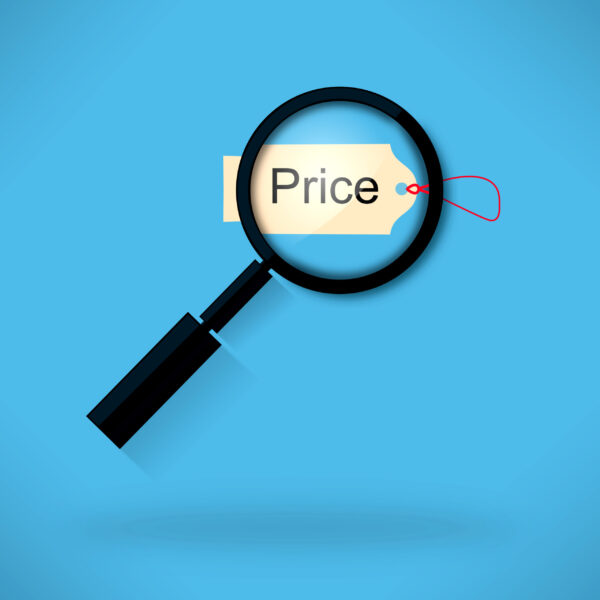High-interest debts can truly weigh you down and stress you out. Understanding exactly what you’re dealing with can make all the difference. High-interest debts, like those from credit cards or certain personal loans, grow fast and can quickly spiral out of control. Knowing how they impact your financial health is crucial to regaining control. By grasping how interest demands build up and inflate what you owe, you can better strategize effectively.
Debt consolidation could be that lifeline you’re looking for to manage multiple high-interest debts. By rolling all your debts into one singular monthly payment, often at a lower interest rate, it eases the complexity of juggling multiple payments. But, it’s not all rosy. It’s essential to weigh the pros and cons. Sure, it simplifies payments and might save you money on interest, but it requires discipline and often a good credit score to get the best rates. Some might even end up paying more over time if they aren’t careful about fees or extend the term of the loan.
Speaking of credit scores, they’re a big player in the debt consolidation game. A solid credit score can open doors to better interest rates or even qualify you for zero-interest options on balance transfers. But don’t sweat it if your score isn’t stellar right now. There are still options on the table, and improving your credit score through responsible financial behavior could lead to better consolidation terms down the road.
There’s a lot of noise out there about what debt consolidation can or can’t do. Myths often overshadow facts, leading to misunderstandings. Some folks think consolidation’s a magic fix, erasing their issues instantly, but that’s not quite the case. It’s a tool to help manage and reduce debt with a strategic approach, but it’s still crucial to work on budgeting and spending habits to truly reap the benefits. Getting the facts straight and avoiding common misconceptions will empower you to make the best decision for your unique situation.
Some of the links on this site are affiliate links, which means I may earn a small commission if you make a purchase through them—at no extra cost to you. I only recommend products and services I trust and believe will add value to you.
Contents
Steps to Consolidate Debts Effectively

Figuring out your current financial landscape is the real starting point for anyone considering consolidation. You need to know your debts, from the smallest to the largest, and understand the terms attached to each, like interest rates and due dates. Listing everything out helps you see the full picture and plan accordingly. It’s like making a financial snapshot that helps guide your next steps.
Finding the right consolidation strategy means understanding what’s available and what suits your situation. From balance transfer credit cards to personal loans, there’s a mix of options. Each comes with its own set of rules and perks. For instance, balance transfer cards might offer a no-interest period, but transfers might come with a fee. On the other hand, personal loans can provide a fixed interest rate and set monthly payments, but you’ll need to qualify based on your creditworthiness.
Balance transfer credit cards can be a handy tool for consolidating debt, especially if you’re looking to knock out high credit card interest rates. With these, you could merge your balances onto one card with an intro period of 0% interest. But don’t forget about the transfer fees, often around 3% to 5% of the amount transferred. Also, the 0% period is temporary, so a clear plan on paying off the debt within that time frame is essential.
Personal loans are another popular option for tackling high-interest debts. You take out a loan to cover your outstanding debts, then pay off creditors, leaving you with one monthly installment—the loan. This method usually offers lower interest rates compared to credit cards, but it’s vital to shop around for loan terms that fit your budget without extending the term too long, which might increase the overall interest you pay.
Every step in the process requires smart decision-making, attentiveness to details, and commitment. Evaluating these options thoughtfully means looking deeper at fees, interest rates, loan terms, and what you can manage comfortably month-to-month. The ultimate aim is less stress and more control over debt, letting you move toward financial well-being.
📌 Compare Your Debt Consolidation Options
| Option | Best For | Pros | Cons |
|---|---|---|---|
| Personal Loan | High-interest credit card debt | Fixed monthly payments, lower rates | Requires fair to good credit |
| Balance Transfer | Short-term payoff with good credit | 0% intro APR offers save interest | Balance transfer fees, promo ends fast |
| Credit Counseling | Overwhelmed or behind on payments | Professional guidance, structured plan | May involve fees and affect credit |
| Home Equity Loan | Homeowners with large debt | Lower interest, potentially tax-deductible | Puts your home at risk if you default |
| Debt Management Plan (DMP) | Struggling with multiple creditors | Simplified payment plan, reduced interest | Typically 3–5 year commitment |
Mastering A Debt-Free Mindset

Setting up a budget can be a game-changer. When you track every dollar you spend, you start seeing patterns, which helps you make informed decisions. Budgets aren’t just about restricting what you spend, but freeing up more money to put towards paying off debt. Set aside a month to catalog every expense and evaluate how much you can realign to speed up your debt payments. This exercise lays the groundwork for financial stability.
Staying motivated during the debt payoff journey is key. Some days are tough, and that’s where having strong motivational habits comes in. Remember to celebrate little victories like paying off a single debt fully or managing a month under budget. These victories can keep your spirits up and reinforce the bigger picture—achieving a debt-free life.
Saving for a rainy day is part of building resilience, even when you’re aggressively tackling debts. An emergency fund, even a small one, can prevent the cycle of debt from starting anew. It offers peace of mind, ensuring you don’t fall back into using credit cards for unexpected expenses.
The mental toll of debt is real. It’s easy to feel overwhelmed or anxious, but addressing these feelings head-on is necessary. Talk openly about your debt-free journey with friends or a support group, which can provide emotional relief and fresh perspectives. Keeping a stress log or practicing mindfulness can also help manage the emotions that come with debt, empowering you to stay focused on your progress.
How to Craft A 1-Year Debt Repayment Plan

Breaking down $30,000 in debt into bite-sized pieces makes the task feel less daunting. Instead of focusing on the big number, aim to tackle smaller chunks each month. For a year-long plan, you’re looking at paying roughly $2,500 monthly. It might require some sacrifices and tweaks in spending, but setting small, achievable goals each month keeps the momentum going.
Choosing between the snowball method and the avalanche method depends on your personality and what keeps you motivated. The snowball method focuses on clearing smaller debts first, giving you quick wins to build confidence. The avalanche method, by contrast, tackles high-interest debts first, saving more money in the long run. Pick the one that fits your style and goals best. Sticking to one of these plans diligently can have a profound effect over time.
Finding ways to boost income can accelerate debt repayment significantly. Consider side hustles that fit your skills and interests. It could be freelancing in your field, selling handmade crafts online, dog walking, or even delivering groceries. Every extra dollar you earn is another step closer to financial freedom, letting you throw more at those debts and cutting down on overall interest paid.
Real-life stories can inspire and motivate you to crush that debt. Look to successful journeys of others who’ve cleared similar or even larger debts to gather tips and encouragement. These stories often highlight mistakes, triumphs, and strategies that worked well in real-world scenarios, offering priceless guidance and realistic expectations on what to anticipate.
Resources and Tools for Financial Success

Using online tools like calculators and financial apps can make managing your debt and tracking your progress much easier. They provide visual insights and projections on how long it’ll take to pay off your debt with different strategies or payments. With a few inputs, you can adjust numbers and instantly see how changes impact your goals. They can be a powerful ally in staying on top of your progress.
Seeking professional advice and counseling can offer a deeper understanding of your financial situation and how to improve it. Financial advisors or certified credit counselors can provide tailored advice and help create a structured repayment plan. Sometimes, getting an outside perspective can provide insights that you might not have considered on your own.
Engaging with the right books, blogs, or podcasts is another savvy way to learn more about personal finance and debt management. There are countless experts and enthusiasts sharing their knowledge and experiences online, often free of charge. Delving into these resources can keep you refreshed with new tips or reminders about financial best practices.
Community support shouldn’t be underestimated. Connecting with others who are also paying off debts can offer moral support and accountability. Consider joining forums, local groups, or online communities focused on debt reduction. Sharing experiences and strategies can motivate and keep you committed to your goals, while also offering a space to celebrate your successes along the way.

